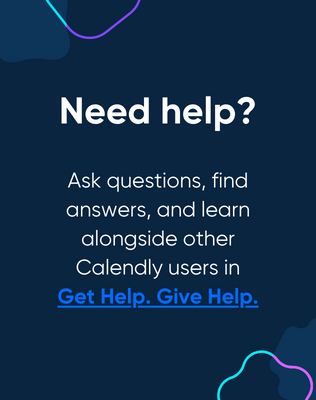Hey Calendly brain,
After having checked the box, we’re getting nearly all of the information needed to build a confirmation page except for, well, the most important part: the event’s location link.
How can we build an .ics file on the confirmation lander without that?
Is there a way to ensure it’s passed manually?
Thanks,
Kevin

